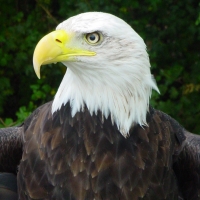The Downside of Green Power: Eagle Deaths

Our smart and connected world comes with a price tag for the rising consumption of energy. Server farms and the corresponding massive power consumption was the topic of an in-depth investigation for an article in last year’s The New York Times, where it was reported that some data centers can consume more power than a medium-size town.
Thus, the growing list of organizations attempting to use green power as a way to lessen the environmental impact associated with conventional electricity use now includes, according to the U.S. Environmental Protection Agency, Fortune 500 companies; local, state, and federal governments; and universities.
In an article citing Google, Microsoft, and Apple as among the top companies looking to tap alternative power sources, InfoWorld reported that the growth of wind farm deployments in the United States has been second only to gas-powered electrical plants in the past six years:
According to the latest data, 6.8 gigawatts of wind power was added in the U.S. in 2011, a 31% increase over 2010. That 2011 jump brought the cumulative wind power capacity for the U.S. to 47 gigawatts, according to a study published by the Lawrence Berkeley National Laboratory.
Using alternative energy sources such as solar, hydroelectric, and wind power is a popular concept, but the growing use of wind farms has a downside—the killing of eagles and other wildlife.
An investigation by The Associated Press earlier this year reported on the illegal killing of eagles around wind farms and the lack of government prosecution. According to The Associated Press, wind farms have “clusters of turbines as tall as 30-story buildings, with spinning rotors as wide as a passenger jet's wingspan.”
With the blades potentially reaching speeds of up to 170 mph at the tips, tornado-like vortexes can result. The unfortunate outcome? “Flying eagles behave somewhat like drivers texting on cellphones; they don't look up. As they scan below for food, they don't notice the blades until it is too late.”
In December, the U.S. Department of the Interior issued a controversial ruling extending permits granted through the Bald and Golden Eagle Protection Act that affords legal protection to wind farms and other projects whose activities injure or kill bald and golden eagles. Previously, those companies involved could obtain permits offering protection from prosecution for a maximum of five years. The new ruling potentially extends the permits to thirty years.
Calling it a “stunningly bad move for eagles,” the National Audubon Society president and CEO David Yarnold said in a statement, “Instead of balancing the need for conservation and renewable energy, Interior wrote the wind industry a blank check. It’s outrageous that the government is sanctioning the killing of America’s symbol, the Bald Eagle.”
While the government heralds as a conservation success story the recovery of the American bald eagle from the brink of extinction, it’s ironic that now it seems eagles are healthy enough to help pay the price for green energy through wind farms.

